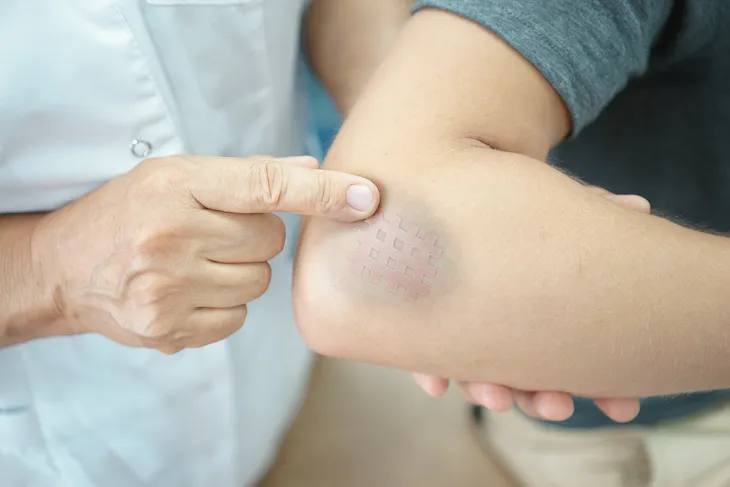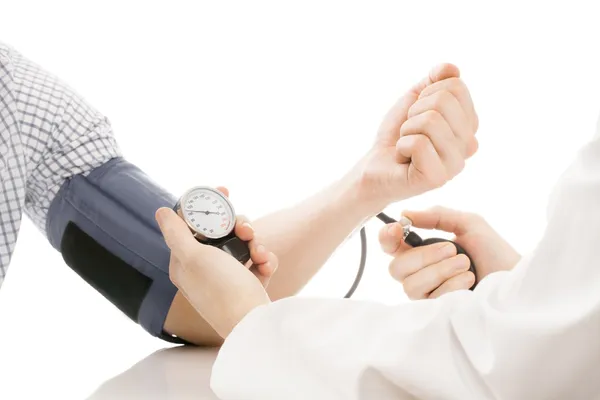This is a condition (also called hypoalgesia) that is characterized by lowered pain sensitivity in patients, which is usually a result of a secondary health condition (such as high blood pressure). It sounds good on the surface – who wants to feel pain? – but it can actually be a problem, as people may mistakenly think they’re in good health, or ignore injuries.
One way this decreased sensitivity can happen is by taking prescription (or over the counter) pain medications, but as we mentioned, there are other ways it can occur from certain diseases and conditions. Let’s take a closer look at six facts about this seldom talked about health problem…
1. CIPA is a Pain
This is an acronym for Congenital insensitivity to pain with anhidrosis, and it starts during the embryo stage of development and results in missing nerves that would normally detect heat and pain, according to LivingNaturally.com.
Another problem in patients with CIPA is their inability to sweat (anhidrosis), adds the source. This makes it difficult for the patient to regulate their body temperature, which could lead to fever-like symptoms in warmer weather, it explains.
2. Genetic Causes are Rare
A 2015 article from the Independent in the UK about research into congenital insensitivity to pain notes that it only affects about 1 in 1-million people. It says that scientists studying the condition were looking at only 11-affected families in Europe and Asia but have identified mutations in a gene called PRDM12.
The researchers found mutations in both copies of the gene that a person with the condition has inherited from their mother and father, who themselves have no symptoms of the defective gene, it adds. Those with congenital insensitivity to pain have their pain sensors “turned off from birth” and therefore will never know physical pain, explains the article.
3. Neuropathy Can be Associated
In an article from EndocrineWeb.com about diabetic neuropathy, it points mostly to the painful symptoms of this condition. However, it points out that neuropathy can affect a patient in different ways, and the symptoms can differ depending on type.
For example, in peripheral neuropathy (the most common type of diabetic neuropathy) that affects mainly the legs, feet, arms and hands, the symptoms can range from burning and stabbing sensations on one end of the spectrum, with numbness and insensitivity to pain and temperature on the other end. Loss of sensation in your extremities – whether you’re aware of your diabetes or not – is a good reason to schedule a visit to your doctor.
4. Injuries are More Common
Pain is a way of your body telling you something is wrong – whether you’ve bumped into the sharp corner of a table, or you’ve got pain from a health condition. However, when you shut off that sensor, you also become unaware you’ve been injured.
For those with CIPA (and presumably other reasons for hypalgesia), loss of sensation can lead to early death due to injuries, fever and infections that go undetected, explains LivingNaturally.com. The source talks of “self-mutilating behavior” of those suffering from CIPA, from accidentally biting the tongue or lips, or sustaining injuries to the eyes and other body parts. Those without pain are also more prone to cooking burns and sunburns, it adds.
5. Higher Blood Pressure, Lower Pain
An article from The C&S Patient Education Foundation confirms the relationship between higher resting blood pressure and lowered sensitivity to pain. “In other words, if your blood pressure is high, you wouldn’t feel as much pain if someone stuck you with a pin,” it notes.
The theory from scientists for this lowered sensitivity from blood pressure, according to the source, is that it’s a way for the body “to restore normal arousal levels after a painful stimulus.” It’s also established that experiencing pain itself can cause a spike in blood pressure. Research also shows those with chronic pain have a higher incidence of hypertension (high blood pressure), but there may be other factors involved (such as body mass), it adds.
6. It Can be Triggered by Exercise
A post on the U.S. National Library of Medicine explains the phenomenon of exercise-induced hypoalgesia, using study groups to measure pain thresholds. The research involved 58-men and women and three sessions.
The study subjects rated the intensity of heat pulses and “pressure pain thresholds” before and after 3-minutes of submaximal isometric exercise (where the muscles aren’t pushed to their maximum, but rather focuses on steady exertion). The results were that the participants reported higher pain thresholds and lowered pain rating following the activity. However, while exercise is a great natural painkiller, this effect of course won’t be at same point of pain resistance as those with no nerve response, like those with CIPA.









